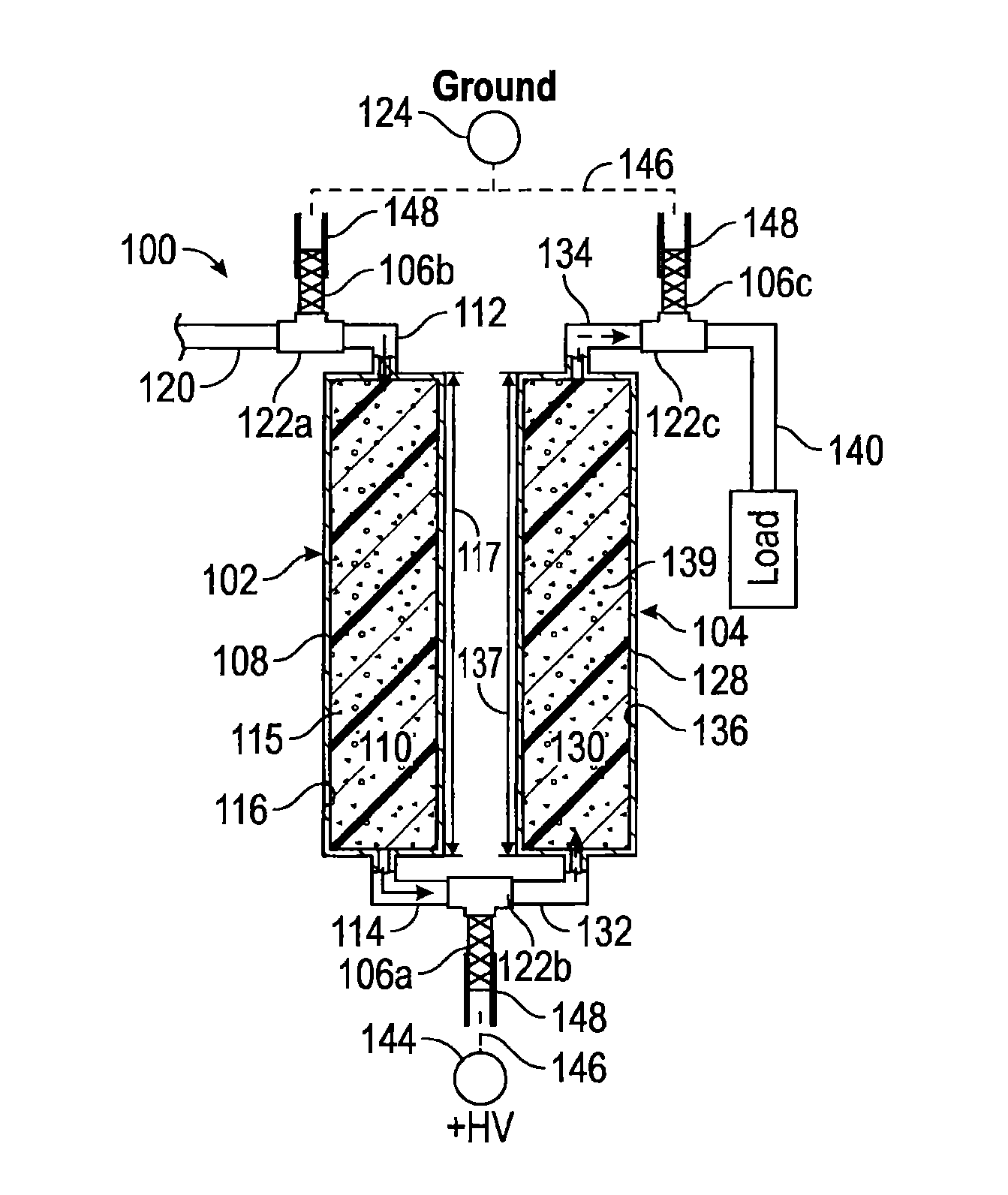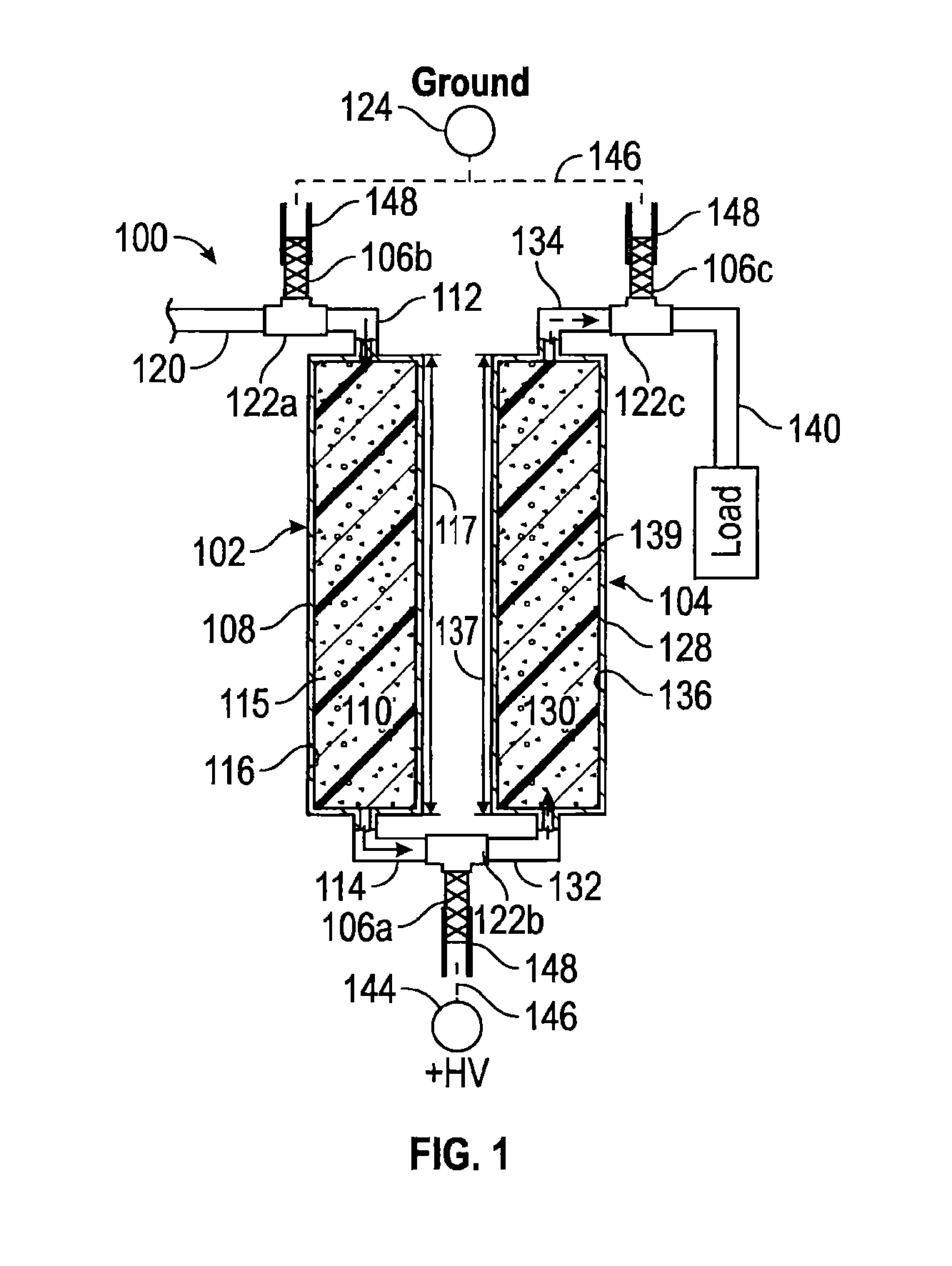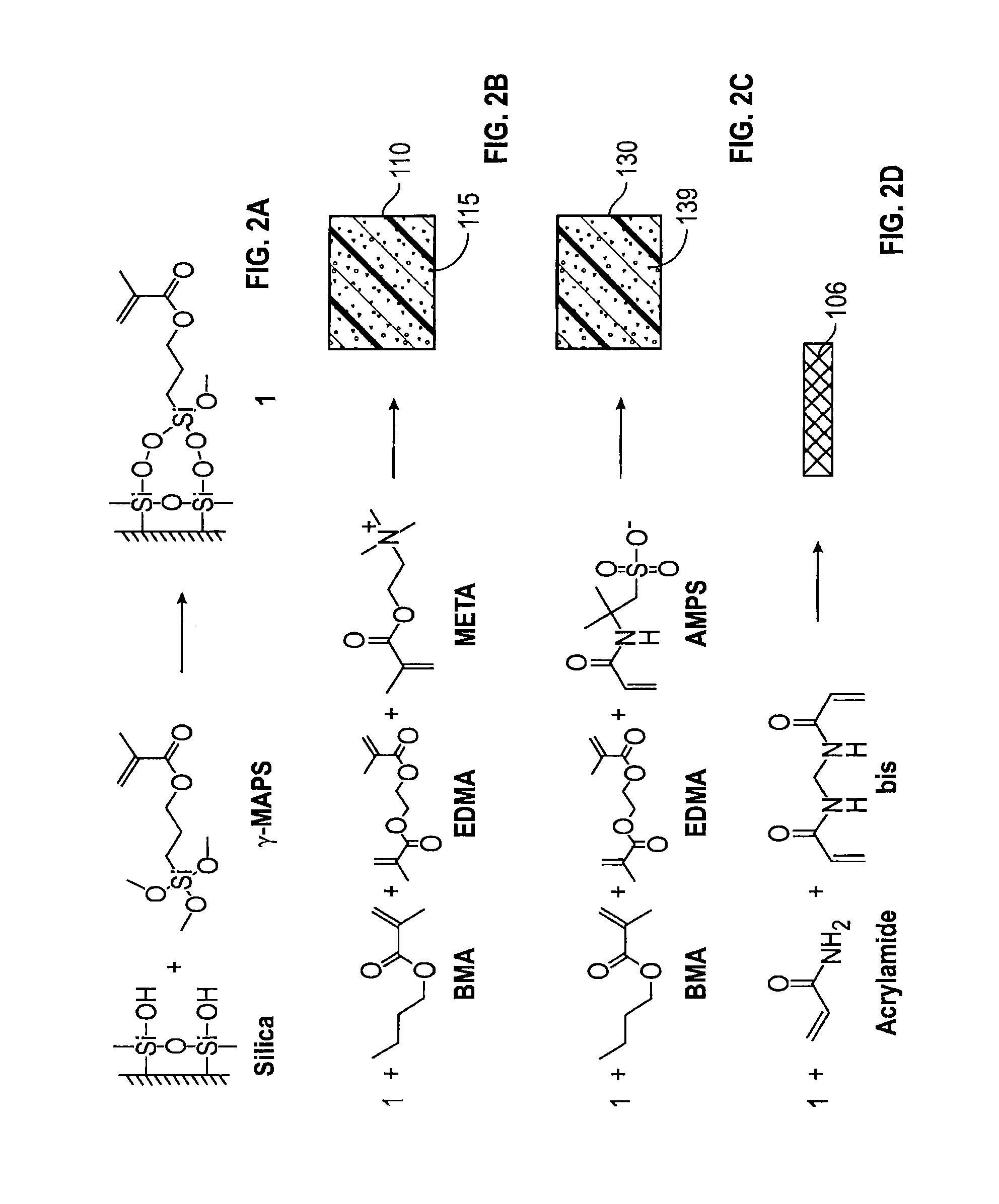Electroosmotic pump unit and assembly
a technology of electroosmotic pump and assembly, which is applied in the direction of machines/engines, liquid/fluent solid measurement, peptides, etc., can solve the problem that few existing micropumps can produce adequate pumping pressure for loc hplc applications
- Summary
- Abstract
- Description
- Claims
- Application Information
AI Technical Summary
Benefits of technology
Problems solved by technology
Method used
Image
Examples
example
[0131]This example describes a non-limiting embodiment of a high-pressure EOP constructed in accordance with the presently disclosed inventive concepts. In this embodiment, the monolith material has been improved by applying a pressure to the monomer solution during polymerization. A binary (i.e., double monolith) EOP gradient generator (“bi-Egg”) is assembled, and the relationship between the gradient profile and voltage applied on the EOP is examined. The feasibility of the binary EOP gradient generator for generating smooth and reproducible nanoflow gradient is demonstrated. After integrating the gradient generator into a miniaturized HPLC, the HPLC is used for separating peptide mixtures from trypsin-digested proteins. The performance of the miniaturized HPLC assembly constructed herein is compared to that of a commercially-available HPLC (an Agilent 1200 HPLC). The two devices exhibit comparable efficiencies, resolutions, and peak capacities.
PUM
| Property | Measurement | Unit |
|---|---|---|
| Pore size | aaaaa | aaaaa |
| Pore size | aaaaa | aaaaa |
| Size | aaaaa | aaaaa |
Abstract
Description
Claims
Application Information
 Login to View More
Login to View More - R&D
- Intellectual Property
- Life Sciences
- Materials
- Tech Scout
- Unparalleled Data Quality
- Higher Quality Content
- 60% Fewer Hallucinations
Browse by: Latest US Patents, China's latest patents, Technical Efficacy Thesaurus, Application Domain, Technology Topic, Popular Technical Reports.
© 2025 PatSnap. All rights reserved.Legal|Privacy policy|Modern Slavery Act Transparency Statement|Sitemap|About US| Contact US: help@patsnap.com



